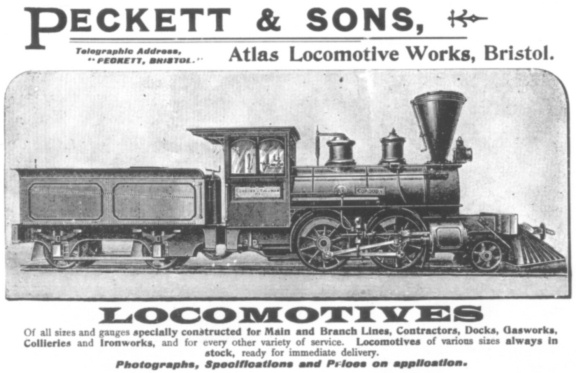
| THE INDUSTRIAL RAILWAY RECORD |
© APRIL 1974 |
LADY ANGELA MOVES HOME
A.R. ETHERINGTON
LADY ANGELA, a Peckett Class R2 0‑4‑0 saddle tank (1690 of 1926) was despatched new to Gypsum Mines Ltd, Kingston-on-Soar, Notts, on 1st July 1926. She spent her working life there through several changes of ownership until supplanted by the inevitable diesel and was eventually purchased by D.F. Pratley from British Gypsum Ltd for preservation by the Shackerstone Railway Society. Her move to the Society's headquarters at Shackerstone railway station in Leicestershire on 22nd May 1971 was at a time when it was cut off from the country's road network by severe weight restrictions pending repairs to a bridge over the Ashby de la Zouch canal. Arrangements were therefore made with British Railways for her to be unloaded half a mile north of the station (where a road ran alongside the track) and for her to be towed along the line, which was then still in use, by John Vernon's Scammell Pioneer. A crane hire company was consulted and its expert viewed the job. Much to our astonishment he advocated lifting the loco from an overbridge nearby and lowering it over the parapet to the line below. We had some misgivings about this but then, experts are experts, so we agreed to go along with his decision. The 19‑ton locomotive duly arrived by low loader, followed closely by a brand new 25‑ton hydraulic crane.

LADY ANGELA on the overbridge near Shackerstone, shortly before the imaginative method of off‑loading was abandoned. If the onlookers on the track look bored it is because by this time they were! (J. Alsop)
After a couple of hours had been spent sorting out the slings and threading the crane rope through the sheaves an attempt at lifting was made. First one end of the loco came off the deck, then the crane's overload bell started to ring, and finally the back end of the crane rose into the air. A pause for consideration was called for. The whole outfit was left in this see‑sawing position for some minutes (with bells still ringing loudly) and was no doubt the cause for the astonished expressions on the faces of motorists crossing the bridge! Several more lifting attempts were made and after each one the radius of operation of the crane's jib was shortened by an inch or so. It soon became apparent to those who had ever lifted anything heavier than a beer mug that this was one of those 25‑ton cranes which can only lift 25 tons when the load is in the cab with the driver; and that if by some miracle the loco were to be lifted and swung out over the parapet its downward flight would be rapid, accompanied no doubt by the crane and part of the bridge!
At this point Mr Vernon moved his Scammell a little further away. More consideration was called for and all concerned adjourned to the nearby "Rising Sun" with this and other objectives in view. Two hours later it had been agreed that the unloading should take place in the lane as originally envisaged. This was not without event as the ground was riddled with anthills and a solid footing for the crane outriggers was very difficult to obtain. Well, we finally triumphed - amidst much further ringing of the overload bells - and LADY ANGELA was then towed by the Scammell to the station, where she was jacked up and slewed across onto the Society's own track.

A Peckett advertisement from about the turn of the century. By the time it appeared the locomotive depicted (Fox Walker 217 of 1874) no longer existed, being scrapped in 1895. Compare this engraving of CORDOBA with the official photograph which appeared on page 196 of RECORD 41.
"New Tank Locomotive in Stock, 4 wheels coupled, cylinders 13in. diameter, 20in. stroke. New locos. always in progress. Three second-hand TANK LOCOMOTIVES, 4 and 6 wheels coupled, cylinders 12in. diameter, 18in. stroke. For sale or hire. THOMAS PECKETT, late Fox, Walker, and Co., Atlas Engine Works, Bristol." ("The Engineer," 17th October 1884. - TJL)